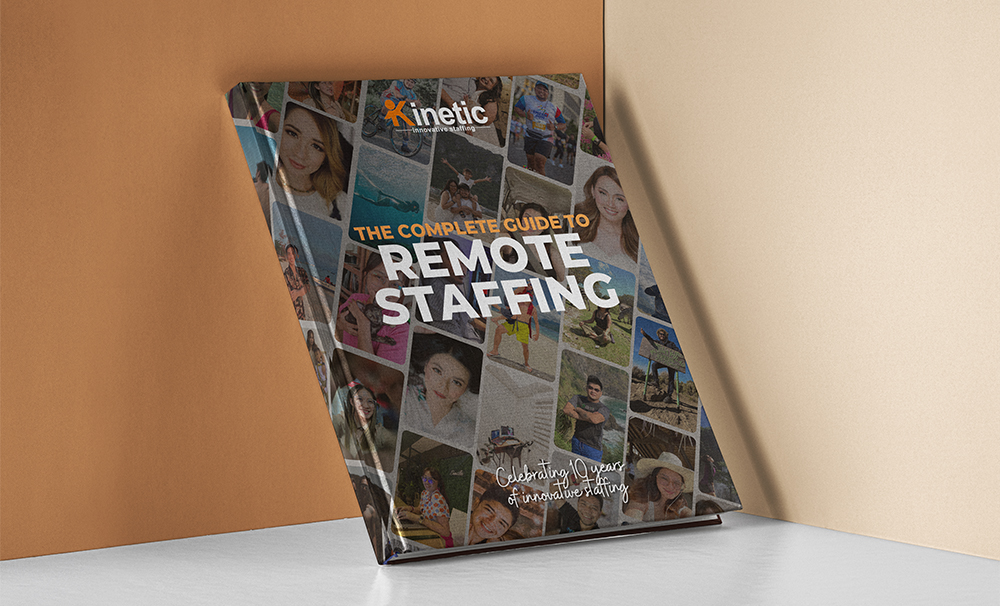“The Big Quit.”
“The Great Reshuffle.”
Just some of the names we use to describe the recent seismic shift in US labour.
In the spring of 2021, workers from the retail, service and related industries quit, en masse. Almost without warning, four million Americans quit their jobs—that’s in April alone. This wholesale exit continued through much of the year, and by November 2021, the American “quit rate” reached a 20-year high.
This trend continues even today and has affected every industry, upending long-established hiring practices.
For sure, a variety of factors played a role in the wave of resignations across America. But the Covid-19 pandemic may have been one of its biggest accelerants and instigator. It is an accelerant because jumping from one company to another, and looking for greener pastures is nothing new. It has been going on for years before the pandemic, and workers from the Millenial and Gen-Z classes have been leading the charge.
Covid is an instigator because it provided the perfect opportunity, the confluence of events that allowed workers to re-evaluate their priorities. According to an August 2021 piece in the New Yorker, experiencing the lockdown, and being away from the office, people were able to meditate on things that truly matter. Whereas without the pandemic, people would be mindlessly toiling away in their respective stations.

People have reacted in many ways to the pandemic. Many have reacquainted with their old, forgotten hobbies, living simpler lives, moving away from the big cities, and taking lighter workloads. And still, others have quit their jobs and may have even crossed over to other industries.
“The Great Resignation” is just one of the palpable social outcomes brought about, directly or indirectly, by the pandemic.
This shift has and will impact every area of how we do work. It will most definitely impact our hiring strategies and decisions. So in this piece, we look at some of the ways HR strategies can be aligned in response to “The Big Quit,” and how assets can be configured to attract the best talent possible.
Is Your HR Responsive to the GR?
Here’s what HR (Human Resource) teams need to do in this season of “The Great Resignation” :
1. Move Fast
Candidates lose interest in a company whose process takes too long. If they don’t hear from HR a couple of days (even hours) after the initial contact, they think the company has passed and hired somebody else. They turn their energies somewhere else, and you may have just lost a valuable prospect.
In ancient times, the average time it took to hire someone was 43 days. This includes multiple rounds of interviews and a barrage of assessments. In today’s climate, your standard Millennial would not wait that long.
You need to truncate your hiring process and make it as streamlined and as seamless as possible. I don’t mean that you do not look at qualifications. I mean you do it with reasonable speed—before the candidate is snatched by the competition—or worse, becomes the competition.
Do not divide the process into many separate occasions or events. If you can, complete the assessment and interviews in a single afternoon.
Communicate to the candidate the status of his application. Give him a progress update and manage his expectations.
“The Great Resignation” members left their former stations because they were not treated well or felt disrespected at work. Any delays or silence on your part will be perceived as shoddy treatment and will not bode well for the company.
2. Make Your Case
The most important thing you need to know about today’s hiring climate is this: It’s a worker’s market. More people are trying to find workers than workers looking for work.
Pew Research reported that the three biggest reasons cited by employees who quit their jobs are: low pay, no opportunities for advancement, and feeling disrespected.
Employees now know their worth to the company and are demanding more than a living wage.
The scenario of the applicant proving himself, with the interviewer leaning back pensively like a demi-god, is now just half the story. The company must also prove they are worth the employee’s time and energy. It used to be that when applicants are asked why they wanted to work in one company, they mention how working there is a “valuable experience.” This time, companies must prove to the interviewee that coming to the fold will afford him “valuable experience,” and beyond that, provide plenty of opportunities for advancement.
In all your communications with your prospects, in the emails, phone calls and interviews, always make your case. Although it is one of the demands, a competitive wage is barely enough to secure a prospect. “Internal mobility” is the name of this new game. If you want to snatch one of the converts of “The Great Resignation,” give them a picture of advancement.
3. Offer flexibility
Freedom from the 9-5, being able to work anywhere one pleases, at any time of the day, and connecting with colleagues via Zoom is now rapidly becoming non-negotiable.
According to a McKinsey report, there are 3 types of “flexibility” workers are demanding: Where work can be done, when work can be done and how the work can be done.
Flexibility is now one of the factors candidates are looking into when evaluating a company. This is a deal-breaker for many because having flexibility at work means being able to tailor the work according to personal preferences and having the time and space to take care of the family. “Me Time” and “Work-life balance” should be on the menu.
Employees are even willing to forego wage increases for flexibility. And they won’t believe that such a work arrangement “…is just not possible.” They’ve been through the pandemic, and they’ve seen how companies and employees were able to make remote working work. They’ve been through the challenges of working from home and have the confidence these will not negatively impact their productivity.
If full-time remote work imposes such a burden on your kind of business, try going for the hybrid compromise where an employee will come to the office only 2-3 times a week. But that said, you need to configure your business ops with remote work. This is rapidly becoming the norm…not the exemption.
4. Look for workers from other “ponds”
In the past, when evaluating candidates, companies might shake their heads at applicants with no prior experience in the relevant position. (“Why are you applying for the position when your experience and training are not in agricultural sales?”)
You might consider taking a different tact on this one.
In addition to the reasons already mentioned, millions of people have left their jobs because they were unfulfilled or unchallenged in the grind. They re-evaluated their life’s trajectories during the pandemic and have decided to change course, looking for jobs that will be personally fulfilling and appealing to them, bravely entering new industries sans any experience to back their application.
This is good news. This might very well mean that the people coming for the interviews are people who are passionate about the field, and genuinely interested in the position or company. They may not have the standard background one might expect, but they bring priceless knowledge and experience cut from other industries that might just revolutionize your own.
Do not neglect the transferrable skills these applicants can inject into your house. Instead, actively seek them out, and pour your resources into training them.
5. Look to workers from other geographies
Many in HR are still in denial about this, but remote work is the future of work. Covid has driven the final nails in the coffin that is the office.
As mentioned earlier, the pandemic has truly tested the viability of a virtual team, taking it to its paces, and unveiling the challenges for employers and employees.
There is no going back to the old ways of doing things. Having gone through birthing pains, remote work has proven itself capable of profitably ushering companies into the digital era. And though the pandemic might be gasping its final breaths, virtual teams are flourishing steadily.
By harnessing technology and turning their sights to virtual teams—companies can not only survive but flourish in this season of “The Great Resignation.”
Earlier, I mentioned that the coming months will be a worker’s market. There are plenty of vacant positions, but only a few qualified (and willing) people to fill them. This climate tends to drive up wage rates as companies compete for those rockstar workers.
There’s a way around this, however. By hiring remote workers, companies can sidestep ballooning labour costs and land highly competent professionals at competitive rates. This means businesses can save thousands of dollars every month and still maintain (or even increase) their team’s talent and skill levels.
Teams like Kinetic Innovative Staffing help companies around the world fill those vacant positions with highly-qualified remote workers…all at a cost that’s significantly lower than what companies are used to paying.
Just how do we do that?
Kinetic Innovative Staffing has been providing hundreds of companies in the Asia Pacific, North America, the Middle East, and Europe with professionals working remotely from the Philippines since 2013. Get in touch to know more.




